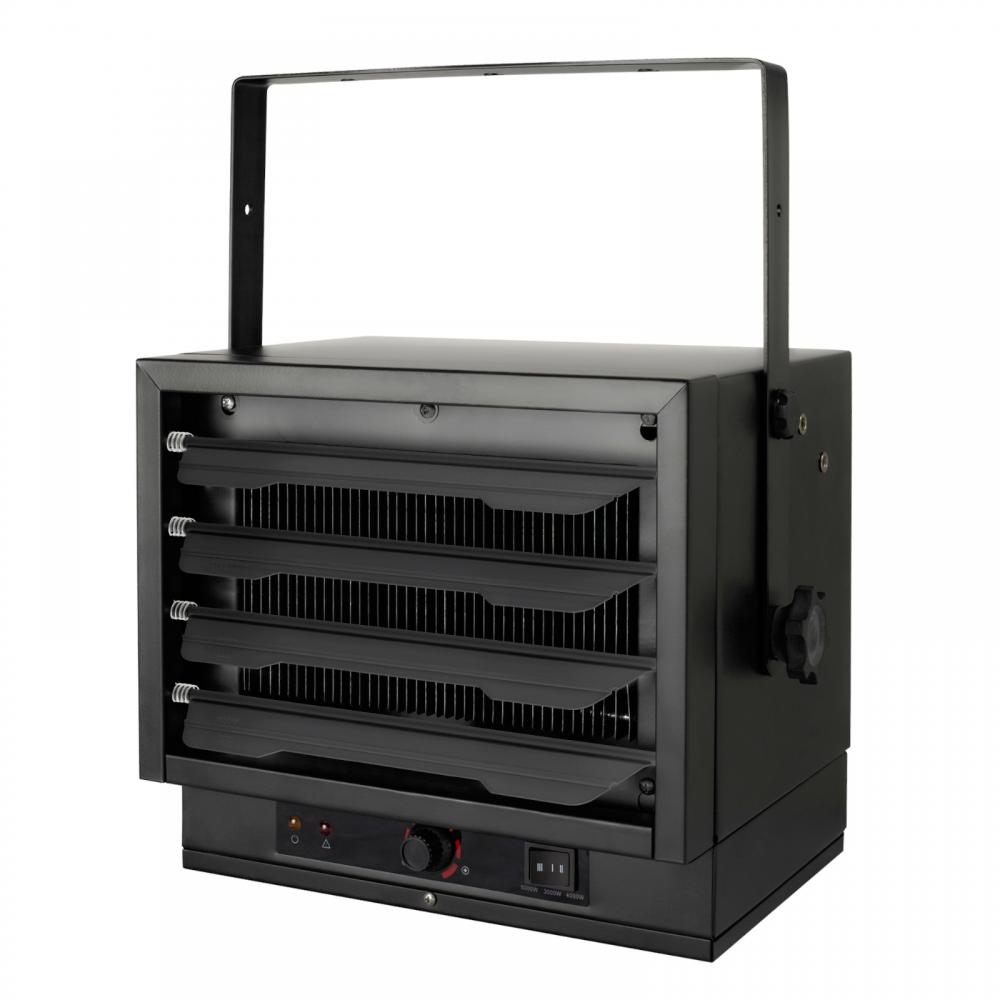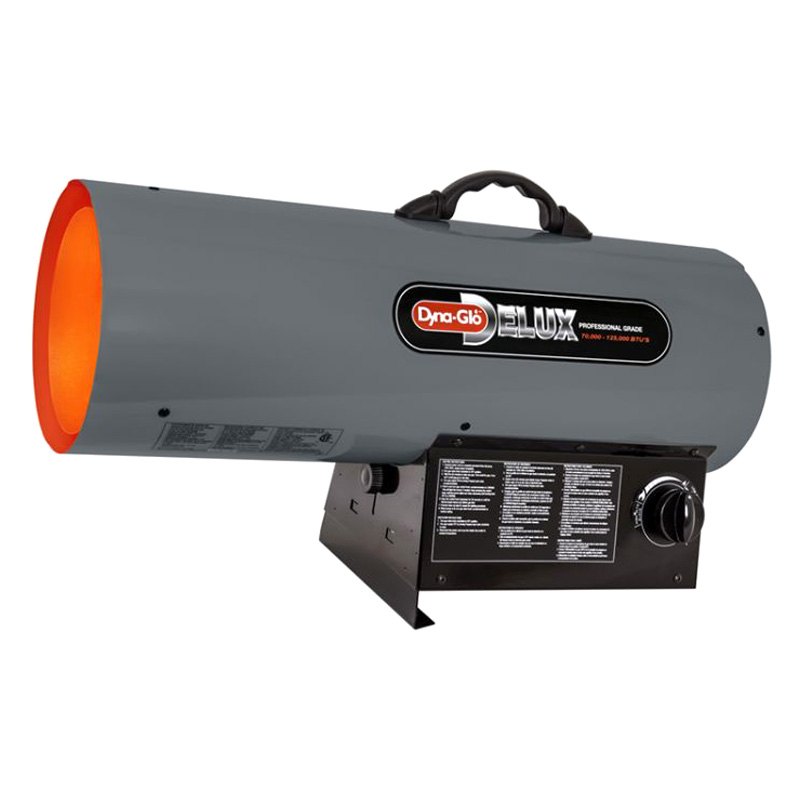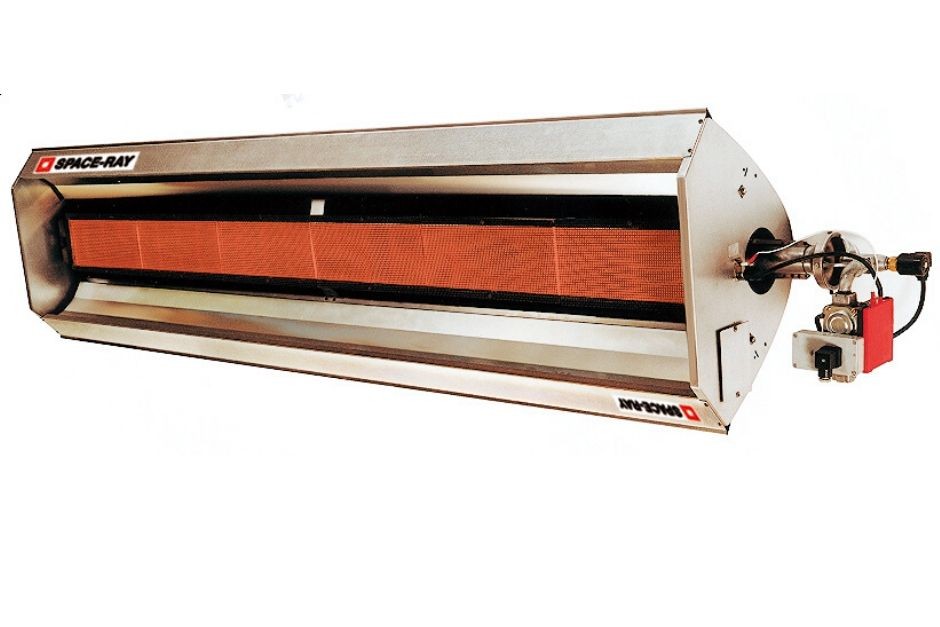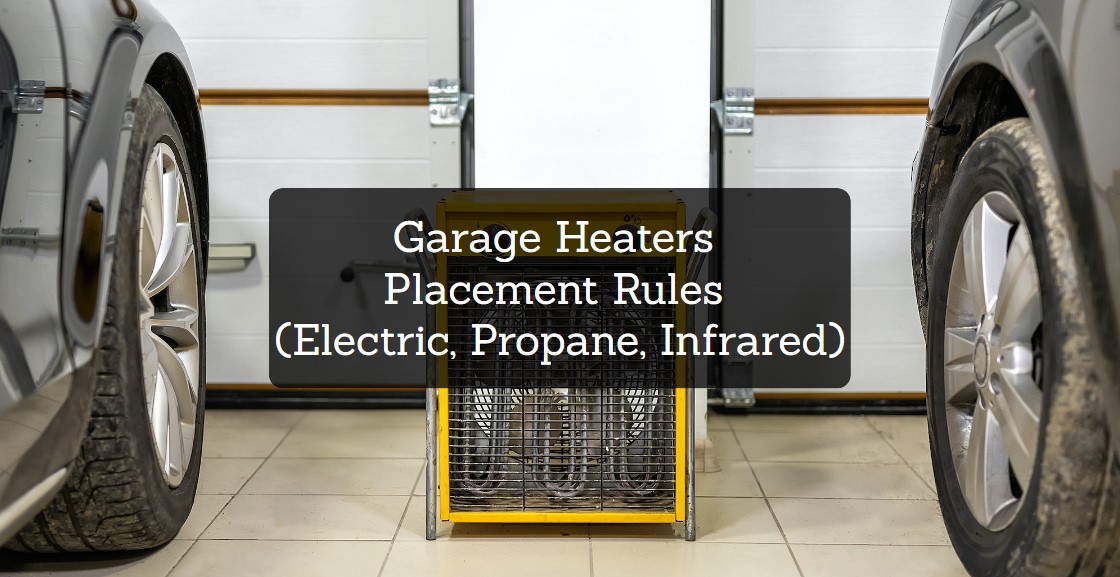Garage heaters are specialized heating units designed to provide warmth in garages, workshops, or similar spaces that are not typically served by the central heating system of a home or building. By the way, if you want to select a heater, you can explore an article about Portable Garage Heaters Compared.
These heaters become crucial in colder climates where working in an unheated garage can be uncomfortable or even dangerous. There are several types of garage heaters, each with unique features and suitable for different needs.
- Electric heaters
- Propane heaters
- Infrared heaters
Each type of garage heater has its advantages and limitations. The choice depends on factors like the size of the garage, insulation, local climate, fuel availability, and personal preferences regarding installation and maintenance. Safety is a paramount consideration when using any type of garage heater, especially those that involve combustion, as they must be properly ventilated to prevent carbon monoxide poisoning.
Electric garage heaters are an efficient and convenient solution for heating garages, workshops, or other spaces where installing traditional heating systems might be impractical or too costly. These heaters are designed to operate on electricity, making them a cleaner and more accessible option compared to fuel-based heaters. They come in various sizes and power ratings to suit different space requirements.

You may also like: 7 Best Comfort Zone Garage Heaters
Features of Electric Garage Heaters:
- Electric garage heaters come in different types, including fan-forced heaters, infrared heaters, and radiant heaters. The design usually includes a compact, durable casing, often made of steel or other robust materials, suitable for rugged garage environments.
- The heating capacity of electric garage heaters varies, typically ranging from a few thousand to tens of thousands of BTUs (British Thermal Units). This allows users to choose a heater based on the size of their garage and the climate in their area.
- Most models feature built-in thermostats that allow users to set and maintain a desired temperature. Some advanced models may offer digital displays and programmable settings for more precise control.
- Safety is a key aspect, with features like automatic shut-off to prevent overheating, tip-over protection, and cool-to-the-touch surfaces. Some models are also equipped with a thermal cut-off switch.
- Electric garage heaters can be freestanding or mounted on the wall or ceiling. This flexibility in installation helps to save space and direct heat more effectively.
- Many electric garage heaters are designed to be energy-efficient, reducing electricity consumption while providing effective heating. Some models come with eco-modes or variable settings to further enhance energy savings.
Usage Instructions:
- Choosing the Right Heater: Select a heater with the appropriate power rating for the size of your garage. Consider the insulation of your garage, as well as the typical outside temperatures in your region.
- Installation: If the heater requires mounting, it’s best to secure it to a wall or ceiling following the manufacturer’s instructions. Ensure it’s placed away from flammable materials and has adequate clearance around it.
- Setting the Temperature: Use the thermostat to set a comfortable temperature. Avoid setting it too high, as this can lead to unnecessary energy consumption and may make the environment uncomfortably warm.
- Ventilation: Even though electric heaters don’t emit fumes like gas heaters, proper ventilation is still important, especially in a workshop setting where dust or fumes from tools and materials might be present.
Safety Rules:
- Read the Manual: Before using the heater, thoroughly read the manufacturer’s manual for specific safety instructions and operational guidelines.
- Placement: Place the heater on a stable, flat surface and ensure it’s not in a high-traffic area where it could be knocked over. Maintain a safe distance from combustible materials like wood, paper, and fabric.
- Electrical Safety: Use a dedicated power outlet for the heater. Avoid using extension cords, but if necessary, use a heavy-duty cord that can handle the power load of the heater.
- Regular Inspection: Regularly inspect the heater for any signs of damage or wear. Check the cords and plugs for any signs of fraying or damage.
- Supervision: Never leave the heater unattended for extended periods. If you leave the garage or are unable to monitor the heater, turn it off.
- Children and Pets: Keep children and pets away from the heater to avoid accidental burns or tipping of the heater.
- Cleaning and Maintenance: Keep the heater clean from dust and debris, which can be a fire hazard. Follow the manufacturer’s guidelines for cleaning and maintenance.
- Emergency Preparedness: Have a fire extinguisher accessible in the garage in case of an emergency. Ensure you know how to use it properly.
Electric garage heaters are a practical solution for heating spaces where conventional heating is not feasible. By choosing the right heater for your needs, installing it correctly, and following safety guidelines, you can enjoy a warm and comfortable environment in your garage or workshop. Remember to prioritize safety, regularly inspect the heater, and adhere to the manufacturer’s instructions for a safe and efficient heating experience.
You may also like: 7 Best Diesel Garage Heaters
Propane garage heaters are an efficient and convenient solution for heating garages, workshops, and similar spaces. They are particularly favored for their portability, ease of installation, and the ability to provide high levels of heat output.

Features of Propane Garage Heaters:
- Propane heaters are known for their high energy efficiency. They convert most of the fuel into heat, ensuring minimal energy wastage. This efficiency makes them a cost-effective choice for heating large spaces.
- Propane heaters are capable of producing a significant amount of heat, which is measured in British Thermal Units (BTUs). This high heat output makes them suitable for warming up large and poorly insulated spaces like garages and workshops quickly.
- Many propane heaters are designed to be portable. They can be easily moved around to different areas of a garage or workshop, providing targeted heating where it’s most needed. Some models are also suitable for outdoor use, making them versatile for various applications.
- Advanced models come with thermostatic controls that allow users to set and maintain a desired temperature. This feature helps in maintaining a comfortable working environment and also aids in energy conservation.
- Modern propane heaters are equipped with safety features such as automatic shut-off mechanisms in case of tip-over or low oxygen levels, and overheat protection. These features are crucial in preventing accidents and ensuring safe operation.
You may also like: 7 Best Garage Refrigerator Heater Kits to Buy
Usage Guidelines for Propane Garage Heaters:
- Proper Installation: It’s essential to follow the manufacturer’s instructions for installation. Some heaters require ventilation, so it’s important to ensure that the garage has adequate airflow.
- Right Sizing: Selecting the right size of the heater for your garage is crucial. A heater that’s too small won’t adequately heat the space, while an overly large heater can waste energy and increase costs.
- Ventilation: Proper ventilation is key. Even though propane burns relatively cleanly, it can still produce carbon monoxide (CO) and other gases. Ensure that the garage has enough ventilation to prevent the buildup of these gases.
- Placement: Position the heater in a safe location, away from flammable materials like gasoline, paint, and wood shavings. It should also be placed on a stable, non-flammable surface and not be used in areas where it can be easily knocked over.
Safety Rules for Propane Garage Heaters:
- Regular Maintenance: Regular maintenance is essential to ensure safe operation. This includes checking connections for leaks, ensuring the burner is clean, and inspecting the heater for any signs of wear or damage.
- Monoxide Detector: Always have a working carbon monoxide detector in the garage. CO is a colorless, odorless gas that can be lethal in high concentrations. A CO detector will alert you to the presence of this gas.
- Proper Fuel Storage: Store propane tanks in a safe location, preferably outside the garage. Propane tanks should be kept upright and in a well-ventilated area, away from heat sources.
- Fire Extinguisher: Keep a fire extinguisher readily accessible in the garage. In case of a fire, having an extinguisher close by can prevent a small accident from turning into a major disaster.
- Educate Yourself and Others: Understand how your propane heater works and educate others who may use it. This includes understanding how to start and shut down the heater safely, what to do in case of a malfunction, and knowing the signs of CO poisoning.
- Professional Inspection: Consider having the heater inspected by a professional regularly. This ensures that it is in good working condition and can help identify potential issues before they become serious.
- Follow Local Codes and Regulations: Be aware of and comply with local fire codes and regulations regarding the use of propane heaters in garages. This may include restrictions on the size and type of heater you can use.
Propane garage heaters are an effective and efficient way to heat up a garage or workshop. However, their safe and efficient operation depends on proper installation, regular maintenance, and adherence to safety guidelines. By following these practices, you can enjoy a warm and comfortable working space while minimizing risks.
Infrared garage heaters are an innovative heating solution designed to provide efficient and targeted warmth, especially useful in spaces like garages where traditional heating methods may be less effective. Unlike conventional heaters that warm the air, infrared heaters emit infrared radiation which directly heats objects and surfaces in its path. This direct heating method makes them highly efficient, as the heat is not lost in warming the air first.

You may also like: 7 Best 120V Heaters for Garage
- Infrared heaters are known for their energy efficiency. They convert almost all the energy they use into heat, making them more cost-effective in the long run compared to traditional heaters.
- These heaters emit infrared rays that directly warm up objects and people in their vicinity rather than the surrounding air. This results in a more comfortable environment as the warmth is felt immediately.
- Unlike forced-air heaters that can be noisy due to fans or blowers, infrared heaters operate silently. This is particularly beneficial in a workspace like a garage where noise can be a distraction.
- With fewer moving parts than traditional heaters, infrared garage heaters generally require less maintenance. This makes them a convenient option for long-term use.
- Most models are designed with safety in mind, featuring overheat protection and a cool-to-touch exterior. This reduces the risk of burns or fire hazards, especially in a cluttered garage environment.
- Infrared heat is known to be a healthier form of heat. It doesn’t circulate dust or allergens as forced-air systems can, making it a good choice for people with allergies or respiratory issues.
- Infrared heaters come in various designs, including wall-mounted and portable models, making them versatile for different garage layouts. Their compact size also saves valuable space.
Features of Infrared Garage Heaters:
Usage Guidelines:
- Proper Placement: Position the heater so that it directs the heat towards the area where it’s most needed. Avoid placing it near flammable materials like gasoline, paint, or sawdust.
- Adequate Ventilation: Ensure proper ventilation in the garage, especially if you’re using a gas-powered infrared heater. This prevents the build-up of harmful gases.
- Control Settings: Use the thermostat or control settings to adjust the heat output according to your needs. This not only provides comfort but also helps in energy conservation.
- Avoid Covering the Heater: Never cover the heater or obstruct its panels, as this can lead to overheating and potential hazards.
- Regular Cleaning: Keep the heater clean from dust and debris, which can affect its efficiency and safety. Ensure it’s turned off and cool before cleaning.
Safety Rules:
- Installation by Professionals: If the installation process seems complex, especially for gas-powered models, it’s advisable to have it done by a professional. This ensures it’s set up safely and correctly.
- Keep Away from Children and Pets: Educate children about the dangers of the heater and keep pets away to prevent accidental burns or tipping over the heater.
- Inspect Regularly: Regularly inspect your heater for any signs of damage, wear, or malfunction. If you notice anything unusual, stop using it immediately and consult a professional.
- Use a Dedicated Power Outlet: For electric models, use a dedicated power outlet to prevent overloading and electrical hazards.
- Follow Manufacturer’s Guidelines: Always refer to the manufacturer’s manual for specific instructions and safety information related to your model.
- Fire Safety Measures: Have fire safety measures in place, such as a working smoke detector and a fire extinguisher accessible in the garage.
- Turn Off When Not in Use: Always turn off the heater when you leave the garage or when it’s not in use.
In conclusion, infrared garage heaters are an excellent choice for efficiently heating a garage space. Their ability to provide direct, comfortable warmth, along with their energy efficiency and safety features, make them a preferred option over traditional heating methods. However, it’s essential to use them correctly, following the guidelines and safety rules outlined, to ensure a safe and comfortable environment. Regular maintenance and mindful usage will ensure that the heater serves its purpose effectively and lasts for years.

